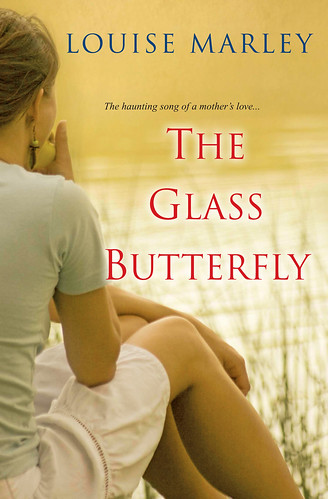Some of you may remember the Journeys interviews I used to do with genre writers whose fiction I love. There’s a whole long story about why I stopped doing the Journeys, and why I’m instead launching Off My Lawn!, wherein I’m inviting a number of awesome contemporary writers to tackle pervasive myths about writing and everything associated with it.
I’ll tell you that story, but not now. Right now I’d like to invite you to listen to my friend Louise Marley. Louise is a former concert and opera singer as well as the award-winning author of more than fifteen novels of historical fiction, fantasy, and science fiction. Her newest novel, from Kensington Books, is The Glass Butterfly and see what you think of her take on “Write What You Know.” Sound good?
Beginning writers are told to “Write what you know.” Mark Twain said it. My first writing instructor said it. Everyone seemed to believe it. Somehow, though, when I tried to do it, as a fledgling writer, everything I wrote was boring. And I was bored.
What excited me about fiction was going to places I had never been. I wanted to meet people—characters—who weren’t part of my daily life. I wanted to glimpse lifestyles that were different, strange and intriguing. I wanted a fantastic experience, not a mundane one.
Still, there were things I knew that were unusual. The world of opera and classical music is one I know intimately, but few people do. Opera singers are hardly the stuff of most people’s daily experiences, and they’re fascinating. Performing on a big stage terrifies a lot of folks, but some of them like reading my stories about what it’s like. For them, the lifestyle of a professional musician is intriguing. For some, a close look at the workings of an orchestra or an opera company is a fantastic experience.
Hemingway said, “From all things that you know and all those you cannot know, you make something through your invention that is not a representation but a whole new thing.” Yes! There are things we know that we bring to our writing, but it’s the things we don’t know—and for a writer of the fantastic, things we cannot know, as Hemingway said—that lift a story from the mundane to the marvelous.
Mark Twain, despite his advice, wrote plenty about what he didn’t know, especially what it was like to be black during slave days in the South, in Huckleberry Finn’s escaped-slave character, Jim. He combined that invention with his real knowledge of the riverboat experience. Hemingway also used what he knew, and he knew a lot—about war, hunting, fishing, exploring—but he added an invented world of emotion, especially in his female characters. He wrote, “A writer who omits things because he does not know them only makes hollow places in his writing.” What would The Sun Also Rises be without the intimate point of view of Lady Brett Ashley? Her emotional depth and complexity make the rest of the novel resonate with readers.
In commercial fiction, the prolific Philippa Gregory (The Other Boleyn Girl, et al) takes what we all know to be true of the Elizabethan era and adds a huge dash of fictional invention to create much-beloved, if not entirely factual, historical novels. Science fiction authors like Suzanne Collins (The Hunger Games
) invent entire societies, but extrapolate from existing science and culture. Perhaps the greatest fantasy author of them all, J. R. R. Tolkien, invented an entire world populated by the most fantastic beings imaginable—but built the world of Middle Earth on his own extensive knowledge of linguistics and history.
I’ve just published The Glass Butterfly, a novel which features a therapist—a profession about which I knew almost nothing before I began—and a sheriff, ditto. The opera composer Puccini makes an appearance, and about him and his work I knew a lot! For the kind of novel I write, just telling a story about Puccini wouldn’t have interested me, but finding the link between a turn-of-the-century dysfunctional family and a therapist in grave danger in the twenty-first century was what excited me.
Writing what we don’t know is, of course, a matter of research, and of asking good questions of the right people. Hemingway learned, somehow (maybe through having had four wives), how the female mind might work. Twain, we can imagine, observed slaves and their lives as he grew up in the South. I’m certain Philippa Gregory has read every historical source there is about her period. For my therapist character, Tory Lake, I read issues of Psychology Today and consulted at length with my sister, a trained therapist. I was fascinated—and energized–by learning the details of a therapist’s life, all of them new to me.
We all write what we don’t know, all the time. Writing what we do know may be the foundation a story is built on, but writing what we don’t know can create some spectacular architecture!








